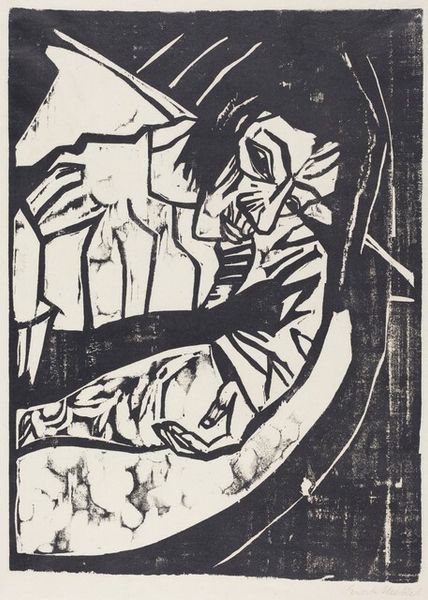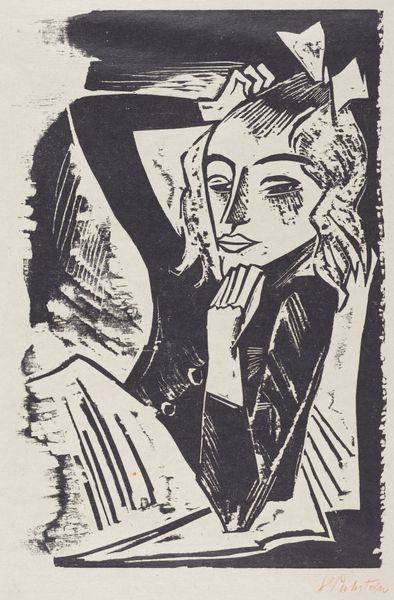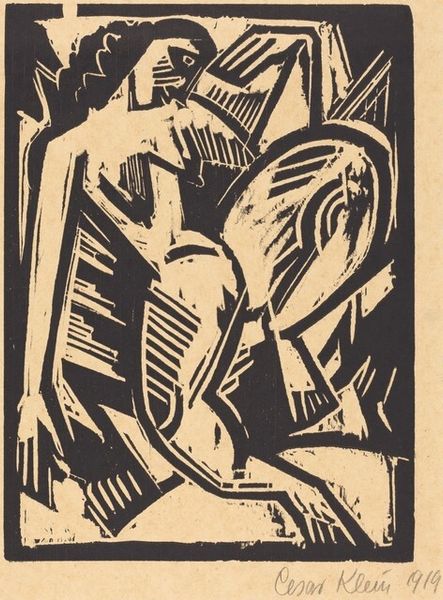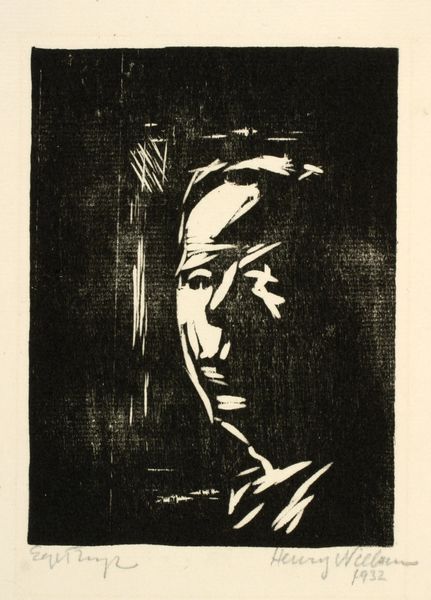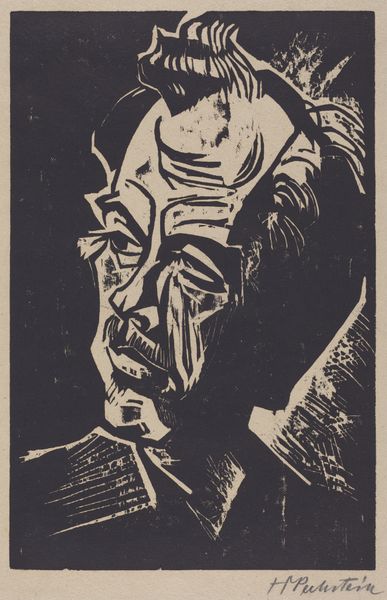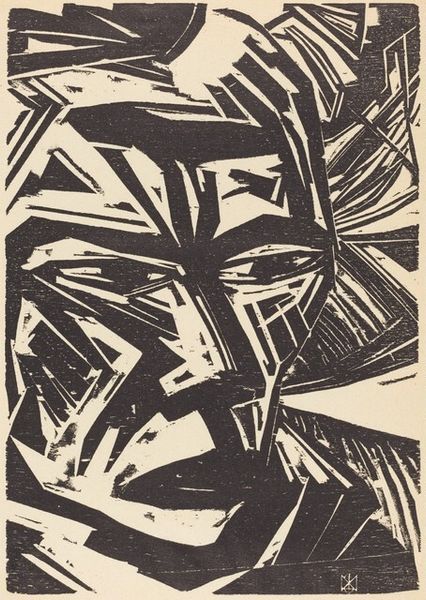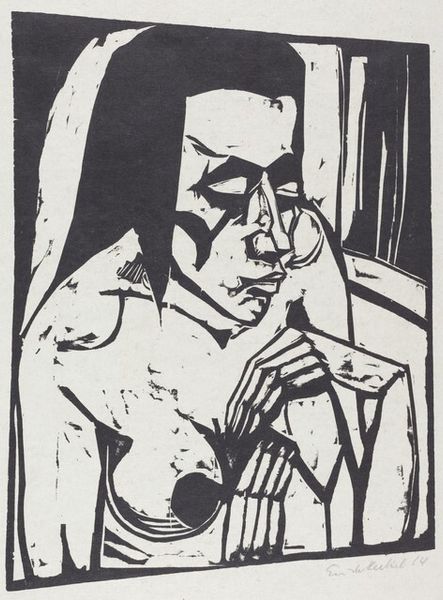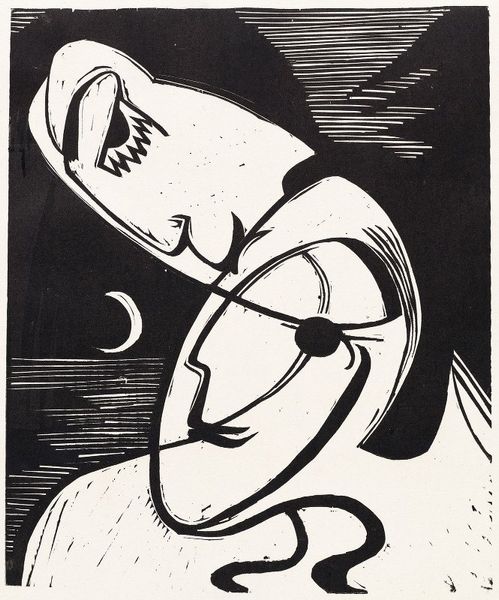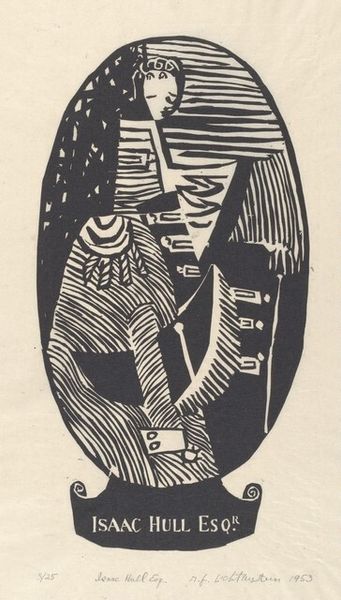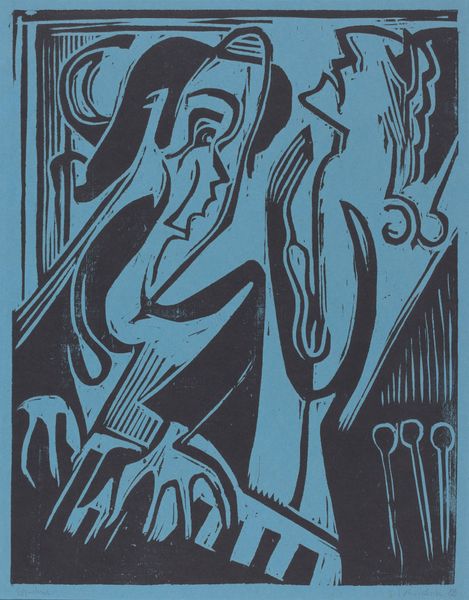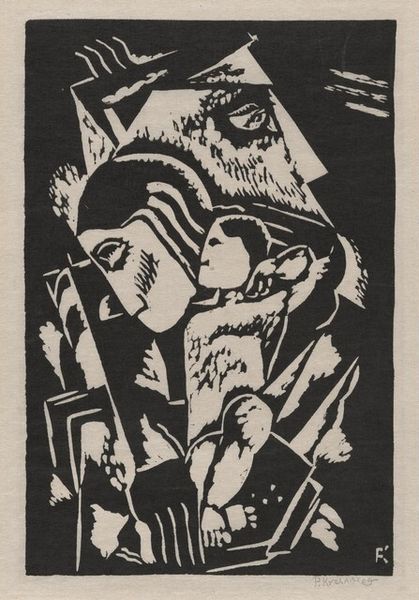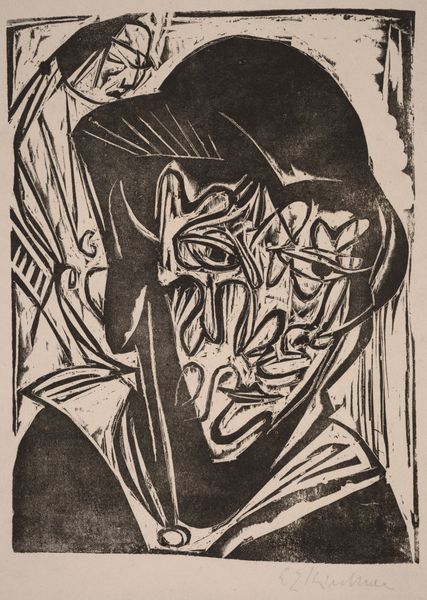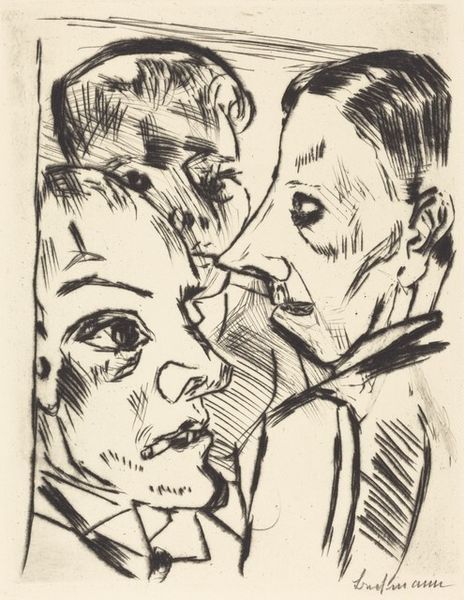
print, woodcut
#
portrait
# print
#
caricature
#
german-expressionism
#
figuration
#
expressionism
#
woodcut
#
portrait drawing
Copyright: National Gallery of Art: CC0 1.0
Curator: Here we have Erich Heckel’s “Sleeping” from 1922, a striking woodcut portrait rendered with the stark intensity that defines German Expressionism. Editor: The immediate feeling is one of unease, strangely. The face is calm, asleep perhaps, but the harsh lines carve out such tension, it’s almost like she’s wrestling something in her dreams. Curator: It's a testament to the power of the medium, isn't it? The very nature of woodcut, those deliberate cuts, they force a kind of brutal honesty. The simplified forms lend themselves so well to the expressionist goal, cutting away the superfluous to reveal the raw emotion beneath. Editor: Exactly! And look at the contrast, that stark black and white divide. It emphasizes the inner turmoil even in sleep. This wasn't just an artistic style, but also a sociopolitical visual, if we remember that, by 1922, Germany was still in chaos following WWI. Is this really a peaceful, undisturbed rest or the uneasy sleep of someone amidst societal distress? Curator: I feel it hints more at personal unease. Heckel often explored themes of isolation and human vulnerability in his work. To me, this sleeping woman is not merely at rest; she is retreating, perhaps overwhelmed by the world's harsh realities. It's fascinating how sleep, usually a symbol of peace, is transformed into a mask for unspoken emotions here. The almost primitive look and the stark woodcut, really capture it. Editor: Do you feel like there is a risk of romanticizing suffering here? Isn't there something profoundly problematic with celebrating, rather than attempting to tackle what causes such obvious societal, even physical unease in people? After all, heckel himself benefited from a rising Germany despite the unrest he depicts... Curator: Perhaps it is in showing the weight and pressure so palpably—we feel what these tensions do, and it is this feeling that pushes for us to ask better questions of those tensions. The rough hewn style of this piece feels more honest to these sentiments and to that weight in particular. I can't help feeling a shared sense of intimacy and anxiety emanating from the print. What does the experience of life feel like for another? Editor: Yes, the work certainly stimulates interesting questions regarding our own biases. This work feels raw and untamed by today's standards... almost. Curator: It's a powerful piece that refuses to let us rest easy, even as it depicts someone sleeping.
Comments
No comments
Be the first to comment and join the conversation on the ultimate creative platform.
